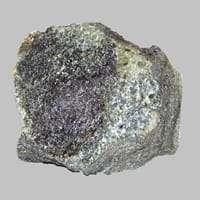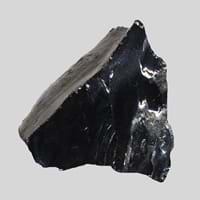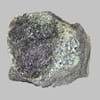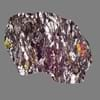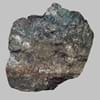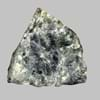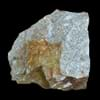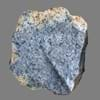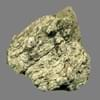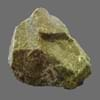Definition
Amphibolite can be defined as a granular metamorphic rock which mainly consist of hornblende and plagioclase
Anthracite is a type of sedimentary rock which is hard and is variety of coal that has high luster
Origin
Unknown
Pennsylvania, U.S.
Discoverer
Alexandre Brongniart
Unknown
Etymology
From Amphibole + -ite
From Greek anthrakites, from anthrax, anthrak meaning coal
Class
Metamorphic Rocks
Metamorphic Rocks
Sub-Class
Durable Rock, Hard Rock
Durable Rock, Soft Rock
Group
Not Applicable
Not Applicable
Other Categories
Coarse Grained Rock, Medium Grained Rock, Opaque Rock
Coarse Grained Rock, Fine Grained Rock, Medium Grained Rock, Opaque Rock
Texture
Banded, Foliated, Massive
Amorphous, Glassy
Color
Black, Brown, Green, Grey
Black, Brown, Dark Brown, Grey, Light to Dark Grey
Durability
Durable
Durable
Appearance
Foliated
Veined or Pebbled
Interior Uses
Countertops, Decorative Aggregates, Entryways, Floor Tiles, Flooring, Homes, Hotels, Kitchens
Not Yet Used
Exterior Uses
As Building Stone, As Facing Stone, Paving Stone, Office Buildings
Not Yet Used
Other Architectural Uses
Curbing
Not Yet Used
Construction Industry
As Dimension Stone, Building houses or walls, Cobblestones, Construction Aggregate, for Road Aggregate, Landscaping, Production of Glass and Ceramics, Roadstone
Cement Manufacture, for Road Aggregate, Making natural cement, Steel Production
Medical Industry
Not Yet Used
In Chemical and Pharmaceutical Industry, Manufacture of Aspirins
Antiquity Uses
Artifacts, Sculpture, Small Figurines
Not Yet Used
Commercial Uses
Cemetery Markers, Commemorative Tablets, Creating Artwork
Alumina Refineries, Electricity Generation, Liquid Fuel, Manufacture of Soap, Solvents, Dyes, Plastics and Fibres, Paper Industry
Types
Hornblendite
Semi-anthracite and Meta-anthracite
Features
Clasts are smooth to touch, Matrix variable, Surfaces are often shiny
Helps in production of Heat and Electricity, Used as fossil fuel
Archaeological Significance
Monuments
Used
Not Yet Used
Famous Monuments
Data Not Available
Not Applicable
Sculpture
Used
Not Yet Used
Famous Sculptures
Data Not Available
Not Applicable
Pictographs
Not Used
Used
Petroglyphs
Not Used
Used
Figurines
Used
Not Yet Used
Formation
Amphibolite is a coarse-grained metamorphic rock which forms by metamorphism of mafic igneous rocks like basalt and gabbro or from the metamorphism of clay-rich sedimentary rocks like marl or graywacke.
Anthracite forms from the accumulation of plant debris in a swamp environment. When plant debris dies and falls into the swamp, the standing water of the swamp protects it from decay.
Mineral Content
Amphibole, Andalusite, Biotite, Calcite, Epidote, Garnet, Hornblade, Kyanite, Magnetite, Olivine, Plagioclase, Pyroxene, Staurolite, Wollastonite
Calcite, Clay, Clay Minerals
Compound Content
Aluminium Oxide, CaO, Iron(III) Oxide, FeO, Potassium Oxide, MgO, MnO, Sodium Oxide, Phosphorus Pentoxide, Silicon Dioxide, Titanium Dioxide
Carbon, Hydrogen, Nitrogen, Oxygen, Sulphur
Types of Metamorphism
Not Applicable
Burial Metamorphism, Contact Metamorphism, Regional Metamorphism
Types of Weathering
Chemical Weathering, Mechanical Weathering
Not Applicable
Types of Erosion
Chemical Erosion, Glacier Erosion, Sea Erosion, Wind Erosion
Not Applicable
Grain Size
Medium to Coarse Grained
Medium to Fine Coarse Grained
Fracture
Irregular to Conchoidal
Conchoidal
Streak
White to Grey
Black
Porosity
Less Porous
Less Porous
Luster
Vitreous to Dull
Shiny
Cleavage
Irregular
Non-Existent
Toughness
2.3
Not Available
Specific Gravity
2.5
1.1-1.4
Transparency
Opaque
Opaque
Density
2.85-3.07 g/cm3
1.25-2.5 g/cm3
Specific Heat Capacity
Not Available
Resistance
Heat Resistant, Pressure Resistant, Wear Resistant
Heat Resistant, Water Resistant
Deposits in Eastern Continents
Asia
Russia, Turkey
Bangladesh, Burma, Cambodia, China, India, Indonesia, Kazakhstan, Malaysia, Mongolia, Pakistan, Turkey, Vietnam
Africa
Burundi, Djibouti, Eritrea, Ethiopia, Kenya, Madagascar, Rwanda, Somalia, South Africa, Sudan, Tanzania, Uganda
Botswana, Kenya, Morocco, Mozambique, South Africa, Tanzania
Europe
Germany, Greece, Iceland, Norway, Poland
Belgium, Bulgaria, England, France, Germany, Greece, Hungary, Kosovo, Netherlands, Norway, Poland, Romania, Serbia, Slovakia, Slovenia, The Czech Republic, Ukraine, United Kingdom
Others
Not Yet Found
Not Yet Found
Deposits in Western Continents
North America
Canada, USA
Canada, Mexico, USA
South America
Brazil
Brazil, Chile, Colombia, Venezuela
Deposits in Oceania Continent
Australia
South Australia, Western Australia
New South Wales, Queensland, Victoria
All about Amphibolite and Anthracite Properties
Know all about Amphibolite and Anthracite properties here. All properties of rocks are important as they define the type of rock and its application. Amphibolite and Anthracite belong to Metamorphic Rocks.Texture of Amphibolite is Banded, Foliated, Massive whereas that of Anthracite is Amorphous, Glassy. Amphibolite appears Foliated and Anthracite appears Veined or Pebbled. The luster of Amphibolite is vitreous to dull while that of Anthracite is shiny. Amphibolite is available in black, brown, green, grey colors whereas Anthracite is available in black, brown, dark brown, grey, light to dark grey colors. The commercial uses of Amphibolite are cemetery markers, commemorative tablets, creating artwork and that of Anthracite are alumina refineries, electricity generation, liquid fuel, manufacture of soap, solvents, dyes, plastics and fibres, paper industry.
